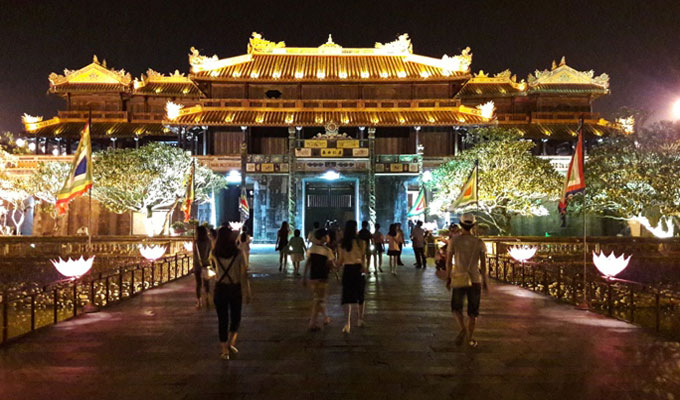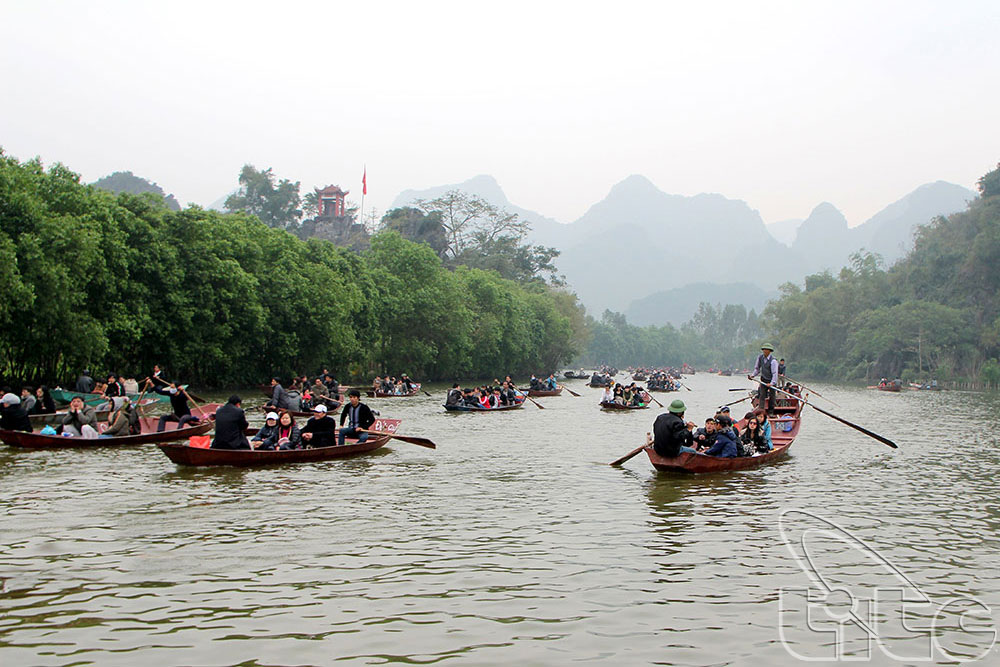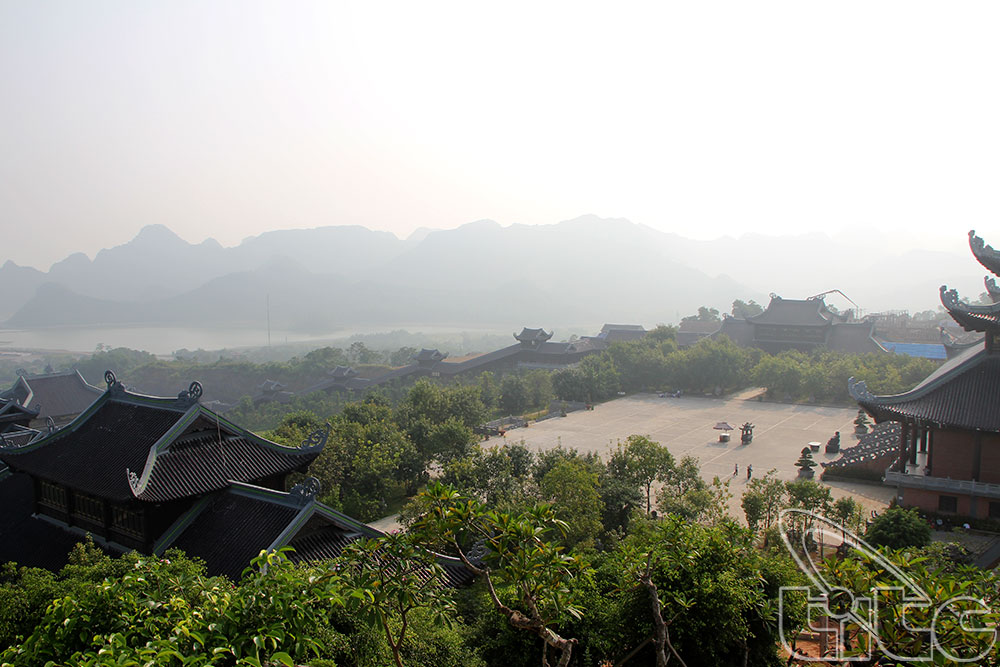Viet Nam holds huge potential for cultural and spiritual tourism thanks to its diversity in terms of culture, customs and traditions, which have been shaped and practised across the nation for thousands of years.

Official statistics show that Viet Nam has around 40,000 tangible and 60,000 intangible heritages. Most of them are in connection with temples, pagodas, monuments, churches, and expressed in religious rituals, traditional festivals and art forms.
The United Nations Educational, Scientific and Cultural Organization (UNESCO) has recognised 11 intangible cultural heritage of humanity in Viet Nam. They are the Vietnamese beliefs in the Mother Goddesses of Three Realms, Tugging rituals and games, Vi and Giam folk songs, Art of Don Ca Tai Tu music and songs, Worship of Hung kings, Giong festival of Phu Dong and Soc temples, Quan Ho Bac Ninh folk songs, Nha Nhac court music, Space of gong culture, and two in need of urgent safeguarding, namely Xoan singing of Phu Tho, and Ca tru singing.
Five places have also gained the UNESCO-recognised world cultural heritage status, namely Central Sector of the Imperial Citadel of Thang Long - Ha Noi, Citadel of the Ho Dynasty, Complex of Hue Monuments, Hoi An Ancient City, My Son Sanctuary, and the natural-cultural Trang An - Bai Dinh Landscape Complex.
Socio-economic aspects of cultural-religious travel
Spiritually and religiously motivated travel has proven its position in the tourism sector. In 2016, one-third of 62 million domestic tourists visited destinations with spiritual significance, according to the Viet Nam National Administration of Tourism (VNAT).
Cultural-religious tourism generates an important source of revenue while creating stable incomes and jobs for local residents. Local residents participate in tourism activities such as sales of worship offerings, souvenirs, local products and restaurant-transport services.
There are more than 2,000 boats on Yen Stream in the Huong Pagoda relic site. Tran Thi Mai, owner of a boat said one festival season is as lucrative as five rice crops. She can earn about 300,000 VND (14 USD) a day by transporting tourists to Huong Pagoda. Men who row bigger boats can earn even more.

Pensioner Nguyen Van Trinh, 80, who records donations at the Ngu Nhac Linh Tu Temple in the Huong Pagoda relic complex said, there are more than ten desks in the temple recording donations made by visitors. On average, he records up to 15 million VND (660 USD) of donations a day. The proceeds are used to maintain, manage, operate the site and contribute to local budget.
The Imperial Ancient Citadel of Hue alone attracts millions of tourists, generating hundreds of billions VND per year. Part of the revenue is used to preserve the site’s conditions and values, including resurrecting the Earth and Crop Gods worshipping “Xa Tac” and “Nam Giao” offering rituals, thus reducing the load on the State budget for the work, according to VNAT Deputy Director General Ngo Hoai Chung.
Only tourism can inspire so many people to visit historical and cultural relic sites. Only tourism can generate and mobilise such huge resources to fund preservation, upgrade, and day-to-day operational costs of the relic sites. And only by preserving, marketing and investing in support infrastructure can relic sites attract visitors and pilgrims, Chung told the Viet Nam News Agency (VNA).
Ancient Bai Dinh Pagoda in Ninh Binh province has been in place for over 1000 years. However, not until multi-million USD of investment was poured into building the Bai Dinh Pagoda complex, improving traffic network and support infrastructure facilities, and marketing efforts has the site become attractive to tourists. The complex has hosted numerous international and national religious events, including the 2008 and 2014 United Nations Day of Vesak.

The UNESCO-recognised Trang An-Bai Dinh world natural and cultural heritage site is a success. The model is expected to create an impetus for tourism development of Ninh Binh and surrounding localities, Chung elaborated.
Cultural-religious trips promote humanitarian values
According to Most Venerable Thich Thanh Nhieu, Standing Vice Chairman of the Vietnam Buddhist Sangha (VBS) Executive Council, Buddhism is more of a religion. It has become a cultural identity that takes deep roots in the nation. There are pagodas in almost every community, from remote areas to cities. There are nearly 15,000 pagodas across the nation, accounting for nearly 40 percent of the nation’s relic sites. Nearly 500 have been recognised as national relic sites and become tourism attractions.
Buddhism is a tolerant faith and has the largest number of followers among religions in Vietnam. In any Vietnamese pagoda, there are three major altars, worshipping the Buddha, Mother Goddesses, and national heroes or great masters who honour the country. Trips to and experience in sacred places, including pagodas, will inspire good behaviors, gratitude and physically and mentally healthy lifestyle among visitors, said Most Venerable Thich Thanh Nhieu.
Dr. Duong Van Sau, Dean of the Faculty of Cultural Tourism of the Ha Noi University of Culture (HUC) also underlined the beyond-economic values of spiritual tourism, saying that most religious and sacred sites are endowed with cultural, religious and historic significance. Spiritual travel products explore the living culture, tradition, history and beliefs. Therefore, they present opportunities for educational and cultural experiences.
Visitors can contemplate or even get themselves involved in ritual ceremonies, traditional festivals and art forms. This is the most effective way to ensure the continuity of cultural values. They also learn about history and culture from proper instructions at religious destinations. Hence, spiritual tourism in some way, offers hands-on lessons for tourists, contributes to raising people’s awareness and knowledge about culture, beliefs, tradition and history of the nation, Sau elaborated.
More and more visitors come to heritage sites. Religious adherents wish to fulfill their faith, some visit sacred places out of curiousity and others simply enjoy their journeys for leisure, seek mental getaways rather than for spiritual or educational purposes.
Crowds of people flock to Huong pagoda during spring festivals. Many of them are actually motivated by the romantic experience and relaxation on boat journeys on the peaceful Yen Stream, between mountain ranges and in the foggy atmostphere, rather than looking forward to the spiritual values.
Le Van Duyen, from Hung Tien commune in Ha Noi’s My Duc district, who is head of the art performance boat on the Yen Stream said the dragon-shaped boat has been deployed for almost ten years. “Our amateur artists in traditional dresses sing folk songs, Cheo and chanty. Most of tourists to Huong Pagoda express their excitement when seeing us. They take photos with us. Some sing and row their boats along ours on the stream,” he said.
Spiritual tourism picks up in Viet Nam
Joint efforts by administrations all levels and sectors have been made to promote spiritual tourism in a professional and sustainable manner while focusing on preserving cultural and religious values, Ngo Hoai Chung told VNA, adding that they include connections among localities and between localities and tourism agencies to explore cultural and religious tourism potential and to lengthen tourists’ stay.
Quang Ninh, Thai Binh, and Nam Dinh are parts of the Tran Dynasty heritage journey. The Central Highlands provinces promote their space of gong culture while the central localities of Da Nang, Hoi An, Hue, and Quang Binh make up an attractive heritage road, Chung gave examples.
The first International Conference on Spiritual Tourism for Sustainable Development was jointly held in Ninh Binh in 2013 by the Ministry of Culture, Sports and Tourism, and the World Tourism Organisation. International and domestic experts discussed planning, management, conservation, and promotion of spiritual tourism products. The event marked the first-time significance the Government attached to developing cultural-religious tourism, Chung said.
Most Venerable Thich Thanh Nhieu, who is also Head of the Bai Dinh Pagoda, said there are many old pagodas in Ninh Binh, including the ancient Bai Dinh pagoda on Trang An mountain. However, few tourists visited the pagoda in the past because it is located on a high mountain. Now, the 550-hectare Bai Dinh Pagoda Complex, including the original pagoda, receives crowds of visitors throughout the year. Tens of thousands of tourists and Buddhist followers visit the pagoda a day during the festival season.
According to Dr. Duong Van Sau from the HUC, religious travel is not new. It has become a global phenomenon. International studies have shown that religion and spirituality are among the most common motivations for travel. Hundreds of millions of people travel to sacred places whether or not they adhere to an official religion. Viet Nam is not an exception in the trend.
Many destinations have become major tourism attractions as a result of their connections to sacred people, places and events, such as Tran Temple in Nam Dinh, Bai Dinh Pagoda in Ninh Binh, Yen Tu Temple in Quang Ninh, Hung King Temple in Phu Tho, and Ba Chua Xu Temple in An Giang.
However, excessive numbers of visitors may adversely affect the structure and spirituality of religious sites. Mismanagement and overuse can also be destructive for the environmental conditions at religious travel destinations. Stakeholders should focus on management when encouraging visitation to conserve the cultural and religious aspects, Dr. Sau suggested.